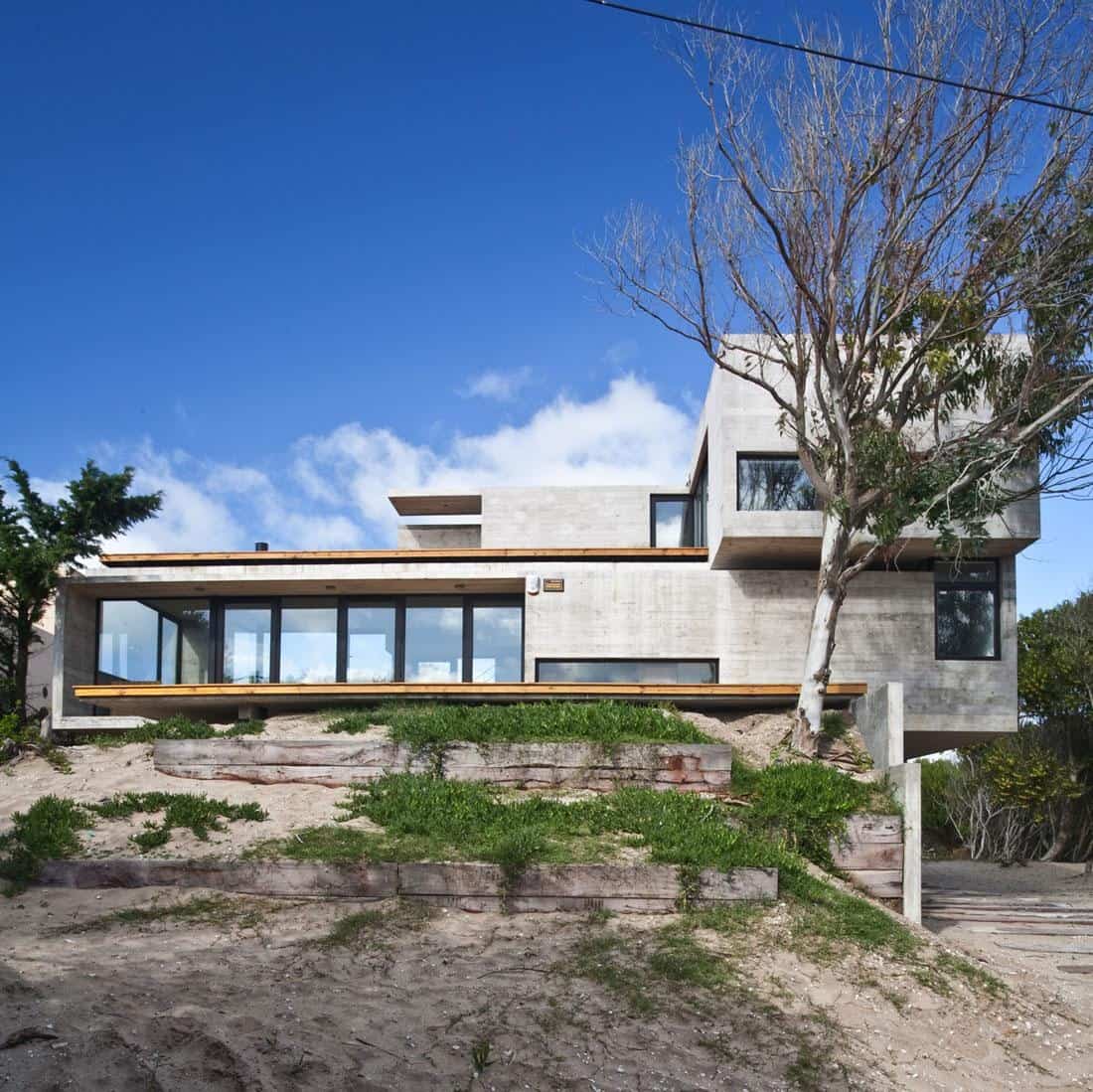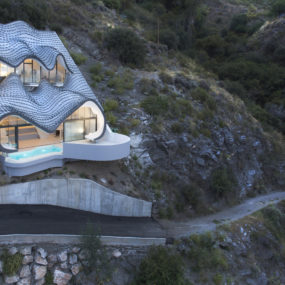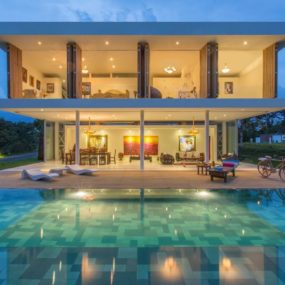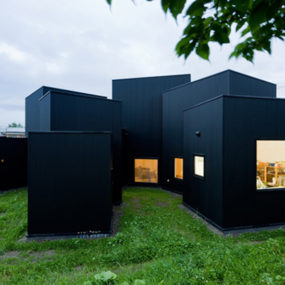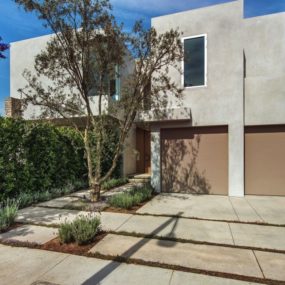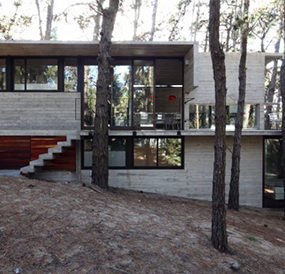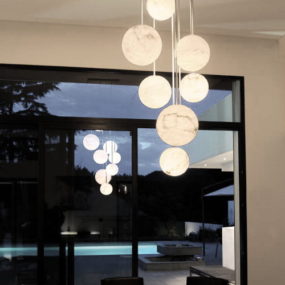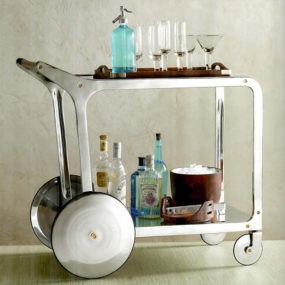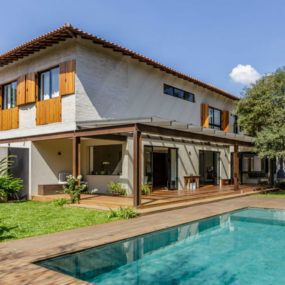Sustainable and low impact houses are becoming more and more popular but what is also becoming a going concern for homeowners is the healthy living aspect of the home itself and that is exactly what the client’s of Alain Carle Architecte brought to the table when looking to have a new home built for themselves.
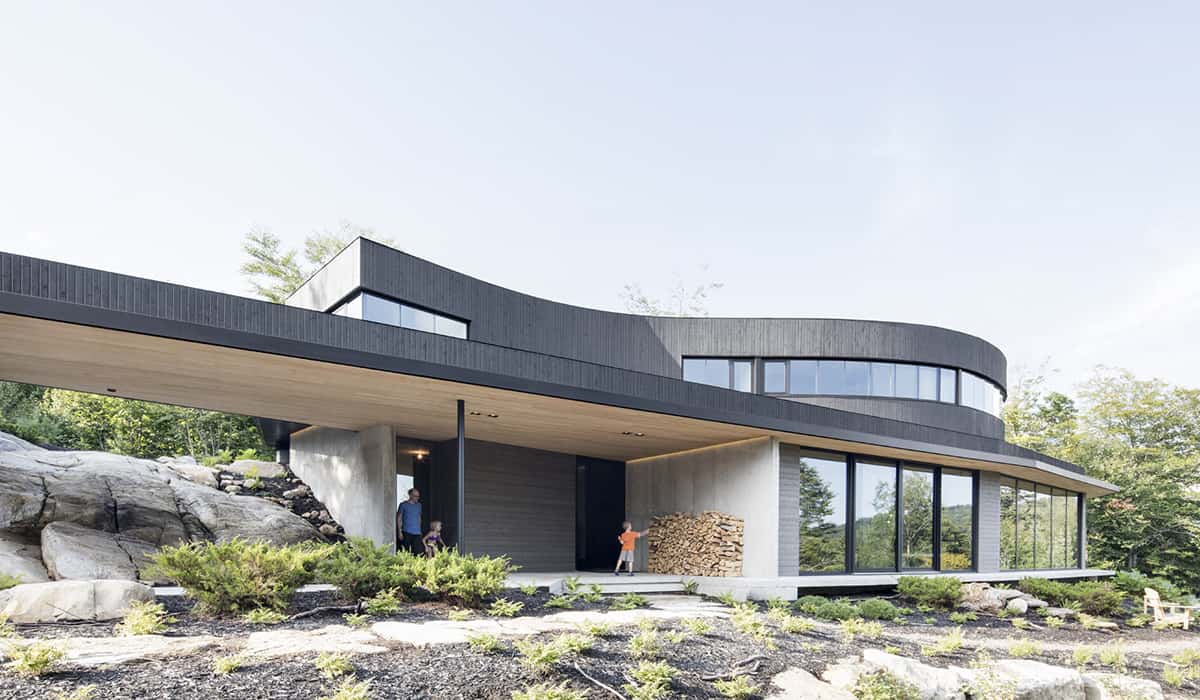
Before Le Heronniere was built the family of four had a list of non negotiable requests for their new abode. There was to be absolutely no magnetic field in the living space; no wireless communication, a self-sufficient energy supply and materials free of volatile organic compounds (VOCs). They also wanted their home to incorporate upcycled building materials and a place to recharge an electric car.
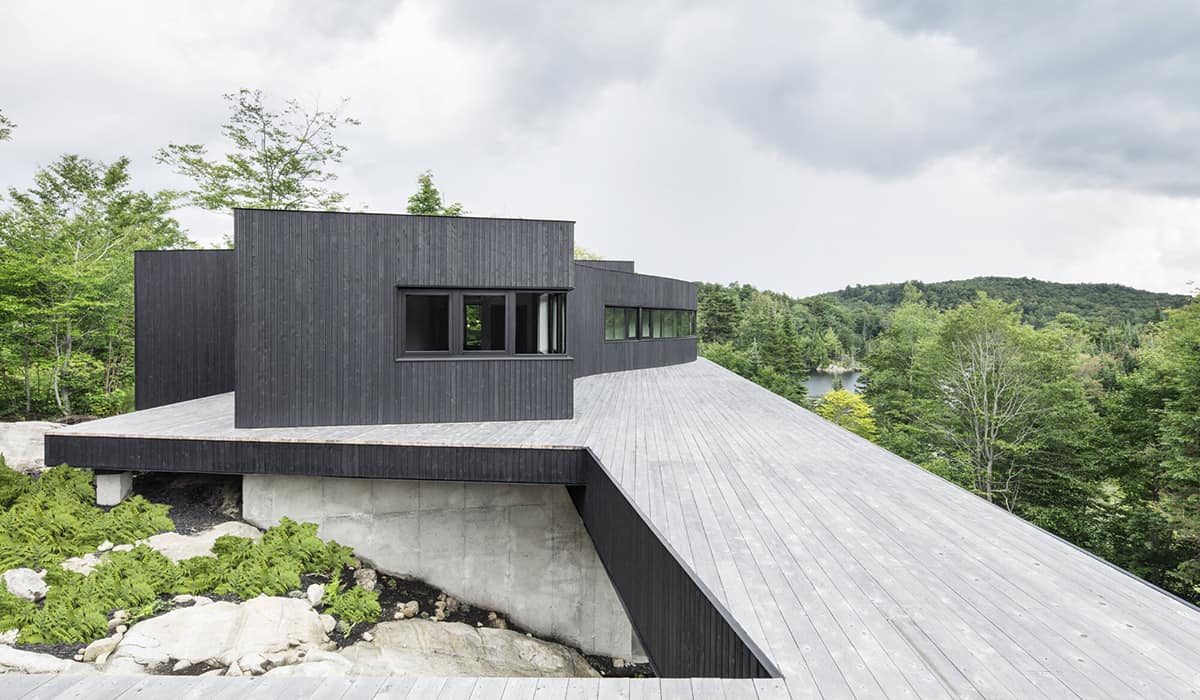
Alain Carle Architecte suggested that the home also incorporate a healthy approach to the land itself. Located on steep site in Wentworth, Ontario, Canada, the site had 3 large boulders on it, and the final design incorporated a horizontal plane that use the 3 geodesic points located on the top of each boulder.

The horizontal plane became the defining factor in both the vertical and horizontal layout of the home with the living spaces positioned below the plane due to their mineral ambiances and the sleeping areas above because of the lighter materials used.

Below the horizontal plane the site was reconfigured to include a flat outdoor living space, This was done by blasting and compacting the residue before reusing it thereby both lowering and raising the ground as need be with as little disturbance as possible to the natural landscape.
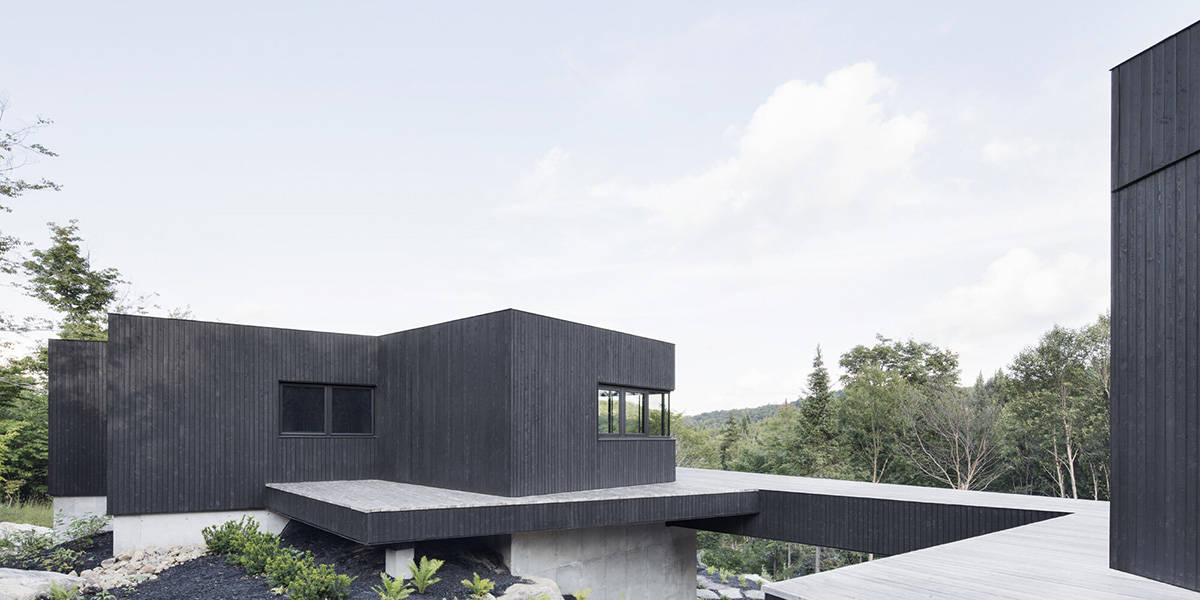
The horizontal plane itself extends past the house to create a deck that becomes a bridge leading to the photo photovoltaic panels above the garage.
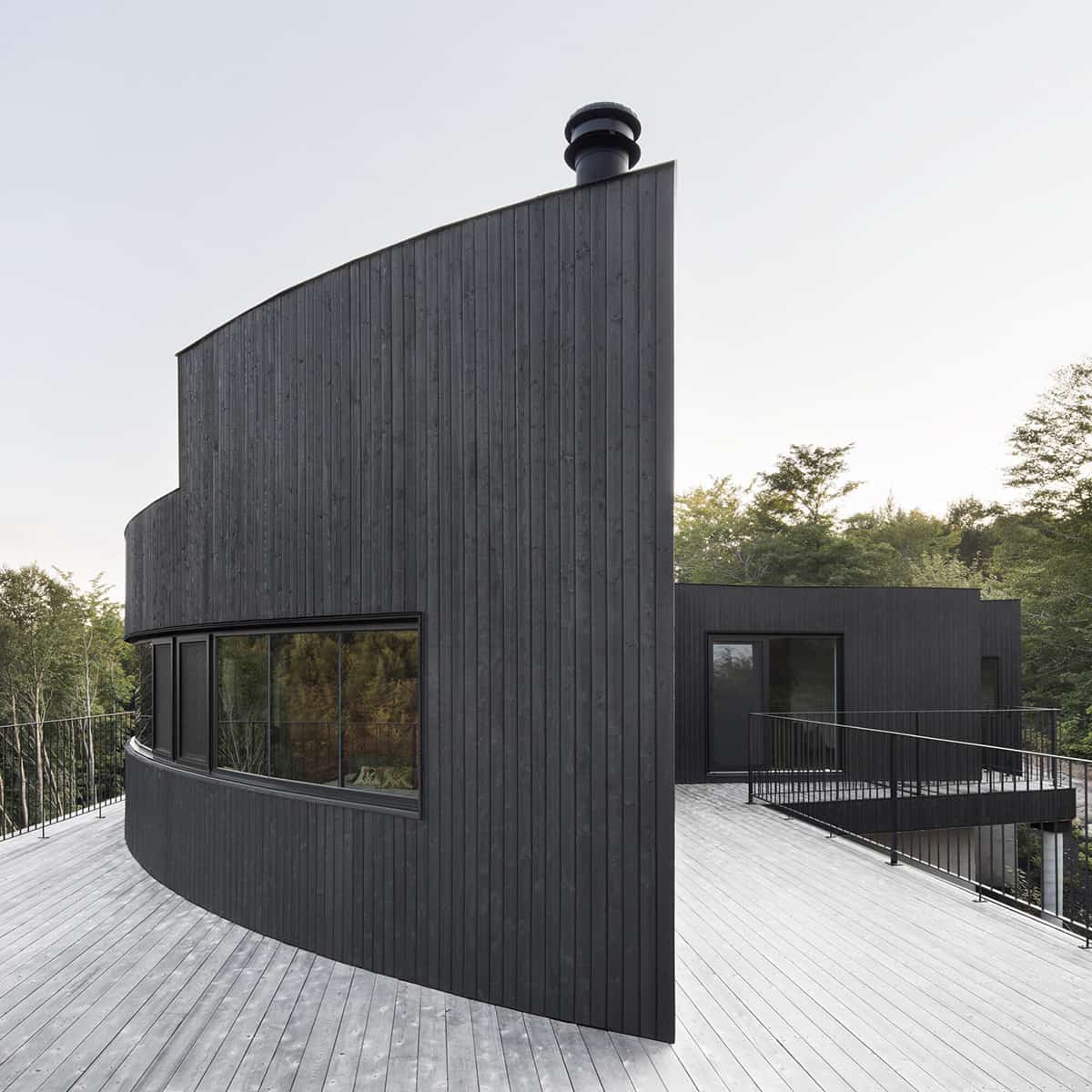
Mainly fueled by biomass, the home supplies itself in an almost total self-sufficient manner. Aside from Biomass the home is also powered by photovoltaic panels and any surplus energy gets rerouted into the region’ power distribution grid to collect credits towards the winter draw.
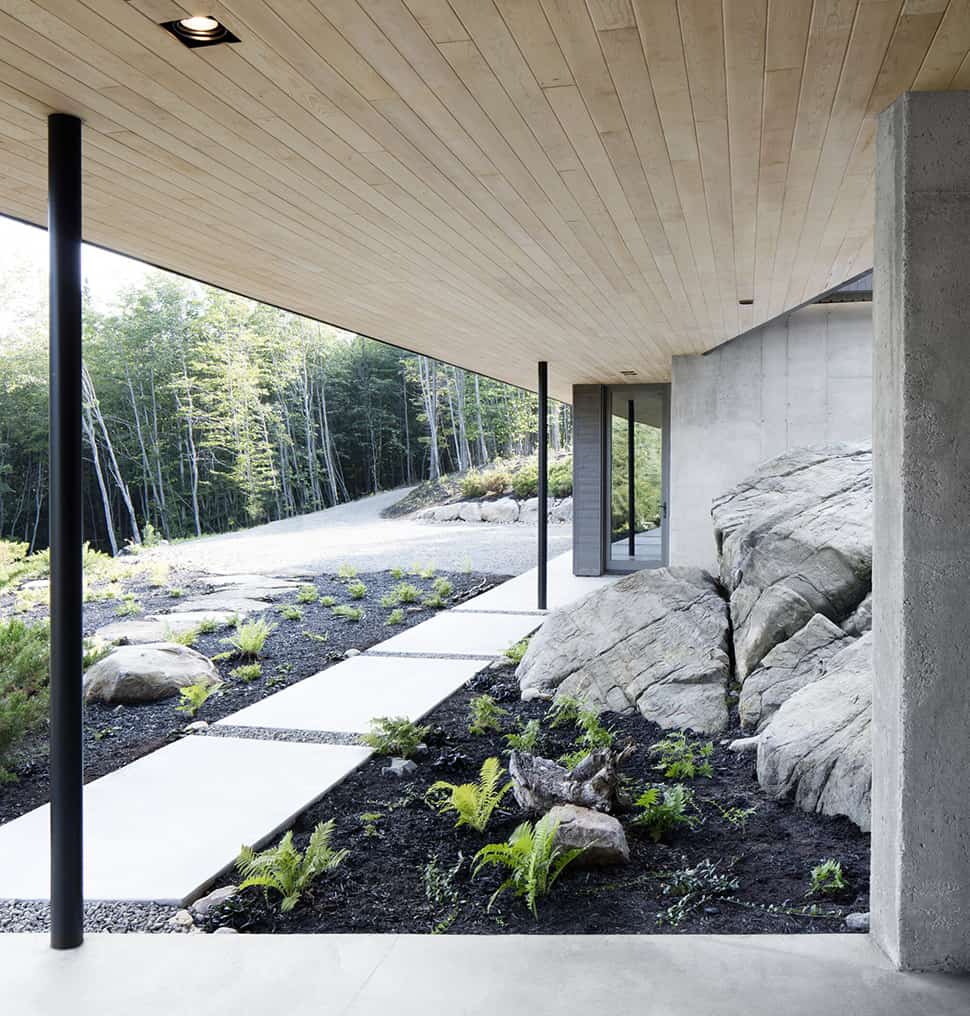
Below the deck is a greenhouse and a sheltered garden that extends out and down the slope. With the slope south facing, sun and drainage are optimized for the homeowners to create a market garden, offering them the ability to control the health of the fruits and vegetables they eat.

The greenhouse is located next to the kitchen for ease of access. It is contained within a large bay window complete with glass door. As some aromatic plants are kept in the greenhouse all year, a drainage system was developed to remove the excess water.
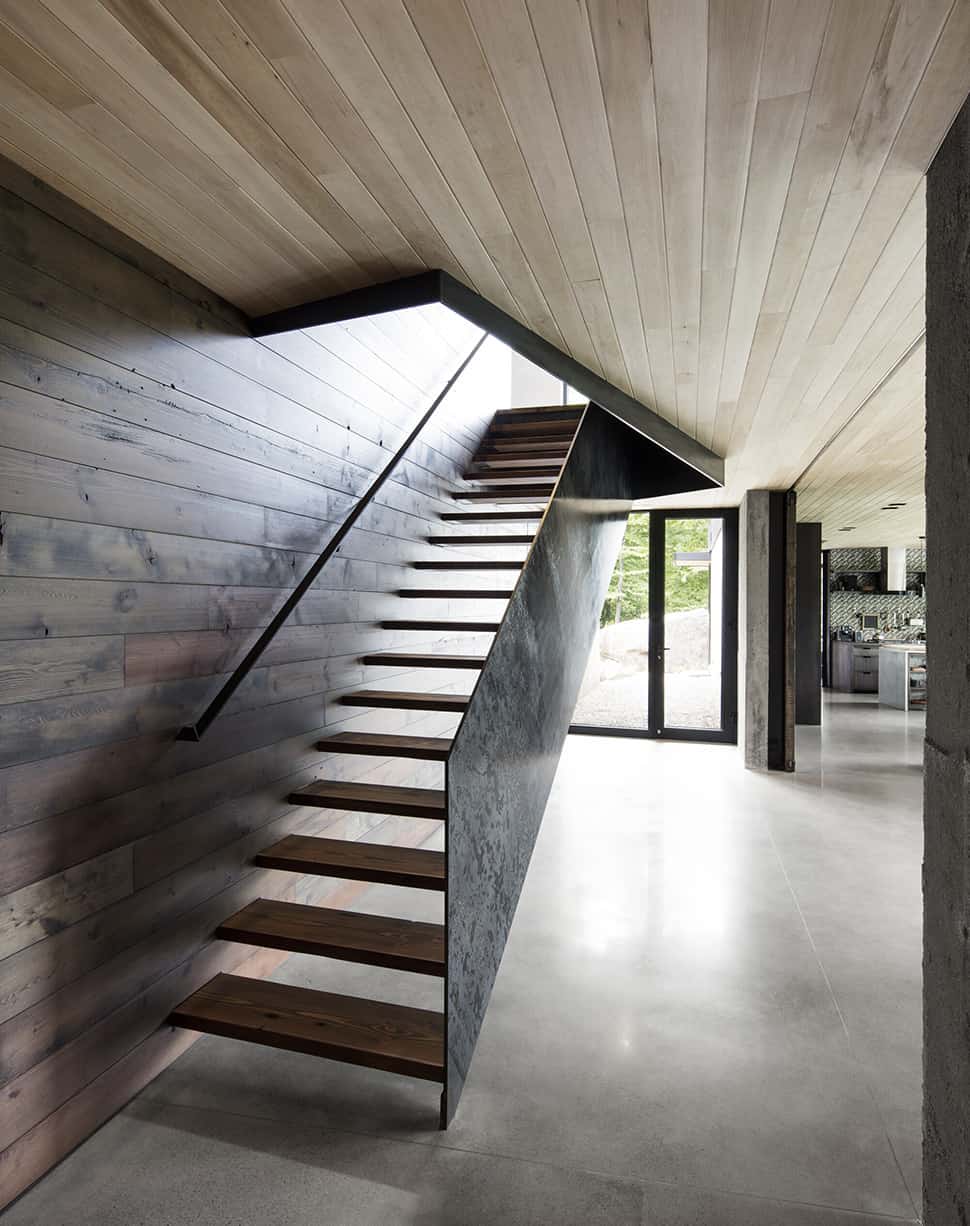
On the other side of the kitchen is access to the outdoors and next to that is the stairwell leading to the bedrooms.
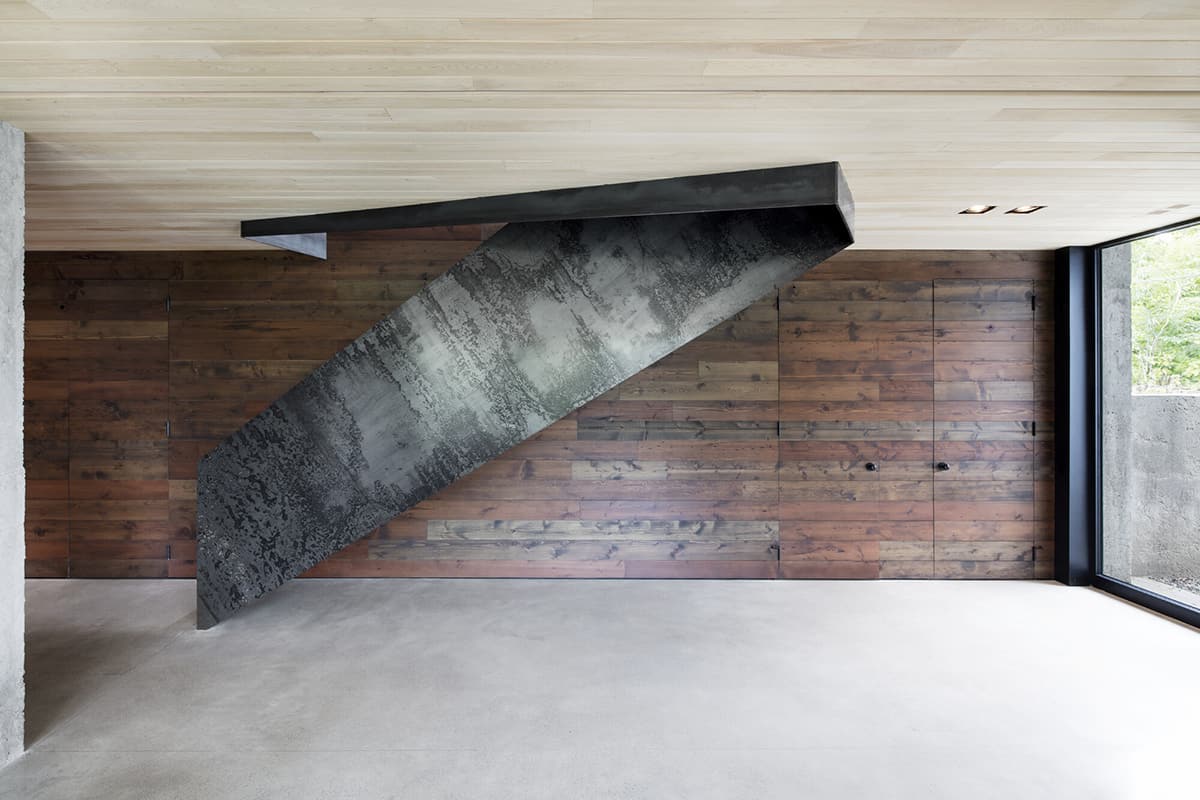
The wall and cupboard doors behind the stairwell are covered in recycled wood.

Recycled wood is also featured on the sliding wall panels that can be opened and closed to either reveal the stairwell or separate it completely from the living area.

The lower level is mainly heated with a slow burning fireplace so when the wall is closed, the heat is prevented fro rising into the upper floor via the stairwell. The fireplace and media center are located between the living and dining areas.
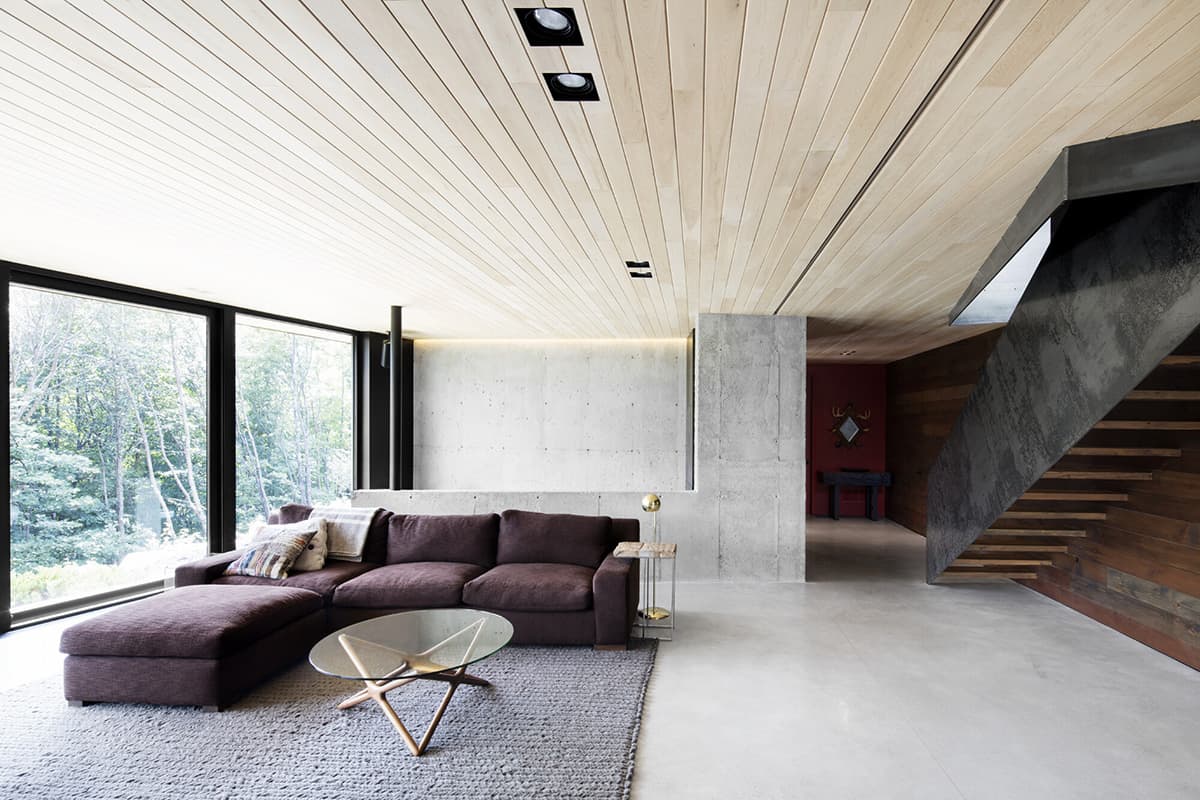
The pony wall behind the sectional hides a food bar for uninterrupted movie/sports watching while eating snacks.
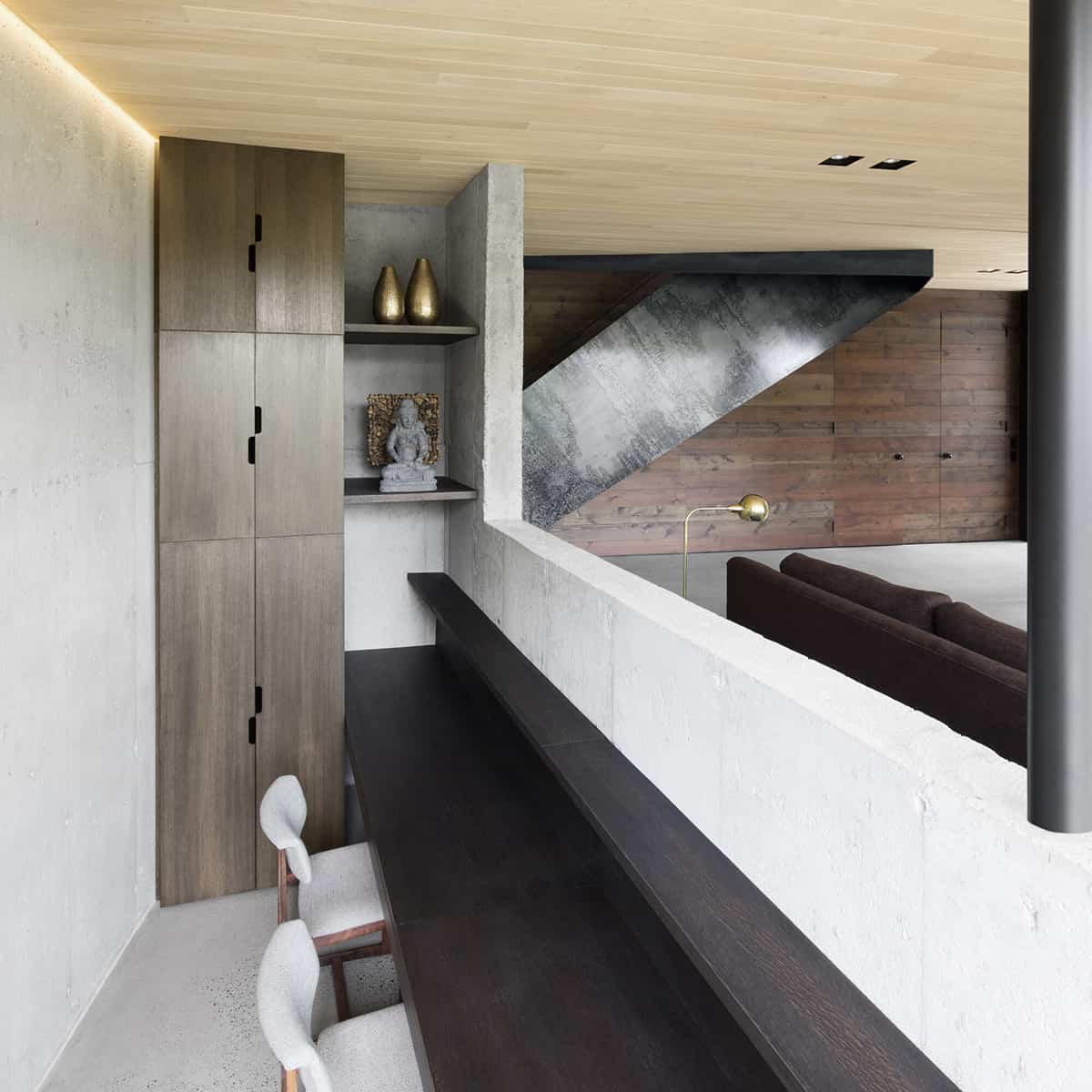
The food bar is fitted with a tall shelving unit in the same wood as used in the kitchen.

The dark wood on the kitchen cabinetry was chosen to create a contrast with the pale grey of the concrete and the pale wood used on the ceiling.
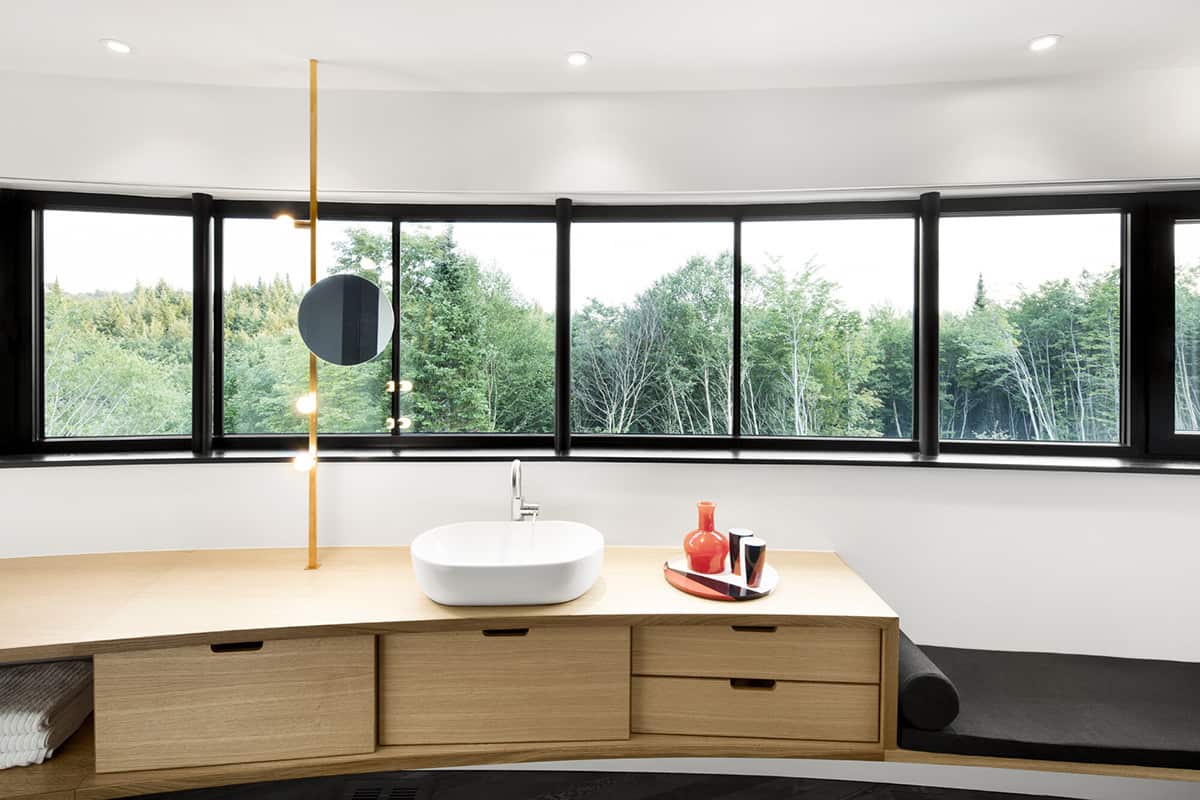
Upstairs, the washroom is custom designed to follow the curves of the wall and since there are windows along the length of the vanity, a copper pipe was installed from vanity to ceiling to hold a mirror.
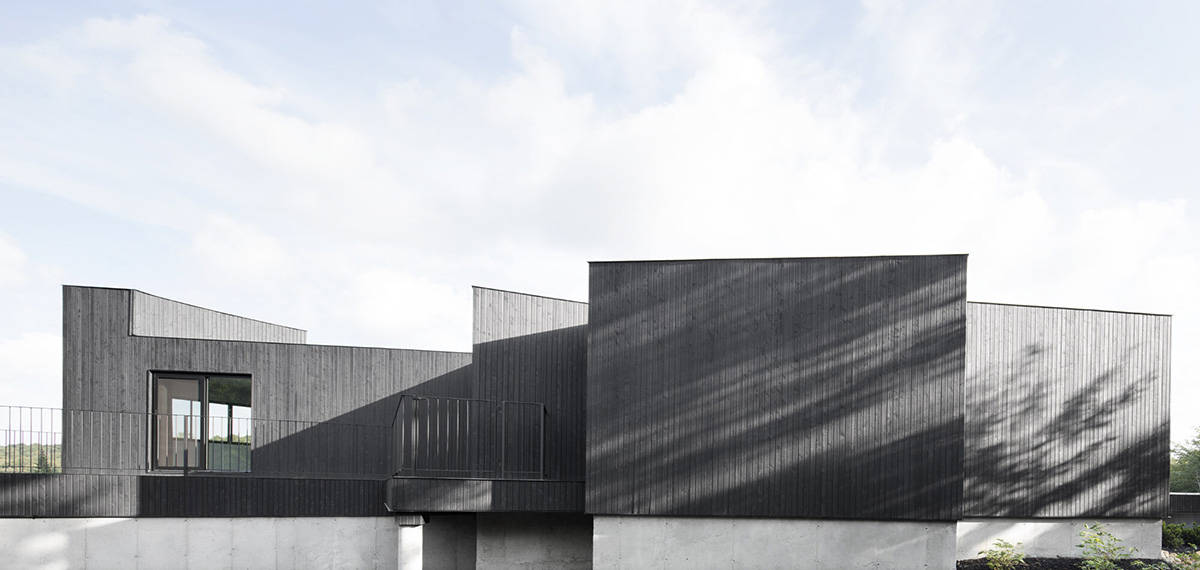
Alain Carle Architecte
—
Check out another example of a self sufficient home – this one in Germany, and also designed with healthy living in mind.
